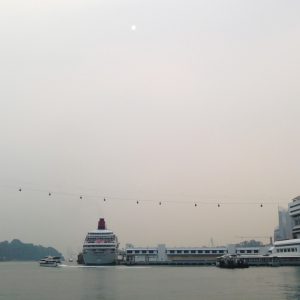Smoke Gets in Your Eyes: The Economic Impact of Haze
September 27, 2021


In recent years, the severe haze from forest fires in neighbouring Indonesia has adversely affected Singapore, typically peaking between July to October. The fires are caused by the burning of peatlands, a cheap but illegal land-clearing method for an expanding palm oil trade. The haze it produces usually spreads to surrounding Malaysia, Singapore, Thailand, and the Philippines, severely affecting air quality.
The chapter “Smoke Gets in Your Eyes” from the book Kiasunomics (2018, World Scientific) by Professor Sumit Agarwal (NUS Business School), A/P Ang Swee Hoon (NUS Business School), and Professor Sing Tien Foo (NUS Department of Real Estate), examines the economic impact of the haze on Singapore, particularly through the rise in water and electrical usage in households.
The chapter, told from the perspective of a taxi driver in Singapore, notes that many economic activities often come to a halt during the haze period, affecting tourism, health, and productivity with flights being paused, more people visiting medical clinics, and people going out less. For the protagonist, this means fewer passengers for him to pick up, and a decline in customers in his family’s retail shop.
Research has found a significant rise in both water and electricity consumption due to households needing to wash and clean the house more, and the increased usage of electronic devices like the air-conditioner and the air purifier during periods of haze. When compared against the Pollutant Standards Index (PSI), the measure of haze intensity, a 100 percent rise in the PSI would likely cost $2.6 million for additional water used, and $8 million for increased in electricity usage. Citing the Ministry of the Environment and Water Resources, the chapter states that the 2015 haze caused Singapore $700 million in losses.
Read the book here.
